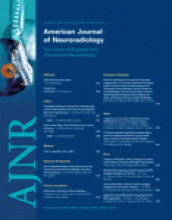Thank you for your comment and interest in our article. Our study was a retrospective evaluation of patients with tumefactive multiple sclerosis (MS), where the interesting finding of elevated glutamine/ glutamate (Glx) was noted on MR spectroscopy. As a retrospective study, only patients with the diagnosis of tumefactive MS were included, and the MR spectra were analyzed. Although this observation was not statistically significant given the limited number of patients in our study, we believe this finding of elevated Glx may be an appropriate differentiating metabolite in the interpretation of an MR spectroscopic examination of a mass lesion. Without doubt, a prospective study of all spectroscopic examinations performed at a given institution would supply more plausible evidence. Also, we fully agree that a major limitation of the article was the small number of patients; however, given the relatively rare incidence of this particular disease entity, statistically significant numbers of patients are difficult to obtain.1 In addition, given the retrospective nature of the study, a small control group of patients with neoplasms from our institution were not specifically included, but solid evidence regarding their typical spectra was provided by a very large published group of 151 patients with neoplasms.2
Our intention was not to suggest concrete evidence regarding this finding of elevated Glx in all possible cases and that it will be the sole differentiating factor between tumefactive MS and neoplasm, but to inform the reader of this interesting observation. Hopefully, as more cases are evaluated, a preponderance of additional evidence may be accumulated to further substantiate our finding. Furthermore, we specifically intended to notify the reader of the importance of obtaining short echo time (TE) spectra in addition to the usual acquisition of long TE spectra when a mass lesion is encountered. Although saving time during an MR examination is a noteworthy goal, the lack of obtaining metabolite information with short T1 and T2 on the long TE spectra alone results in a limited chemical evaluation of the pathologic entity and may suggest the wrong diagnosis.
As noted in the article, exact determination of the integration of the area under the Glx complex peak is prone to error, given the adjacent and usually incorporated N-acetylaspartate (NAA) peak as well as the multiple spikes produced by the Glx metabolites. At present, the established method with a 1.5T scanner is to choose the highest peak in the complex from 2.1 to 2.5 ppm (which is usually the shoulder adjoining the NAA peak) and compare that peak height with the peak height of creatine. A ratio of 0.5 or greater is considered abnormal.3 With improved peak separation at 3T, more accurate quantitative methods to determine Glx should become standard practice.
We regret any misunderstanding that may have resulted but can only hope this publication prompts additional patients with tumefactive MS to be interrogated with short TE spectra and that more information is subsequently generated, which may ultimately provide a statistically significant finding.
References
- Copyright © American Society of Neuroradiology











